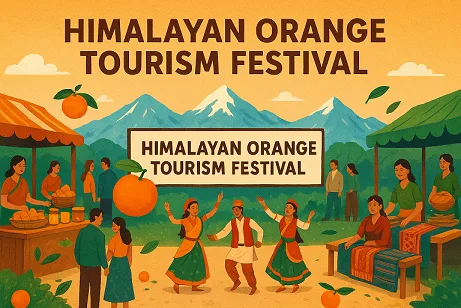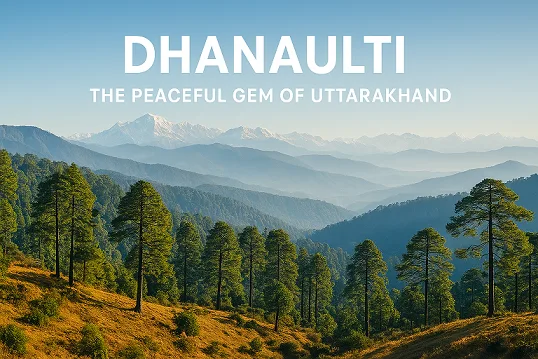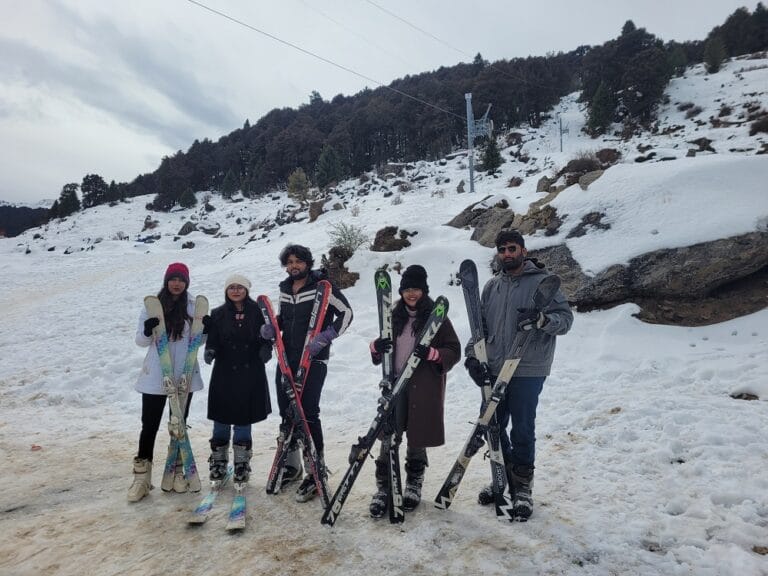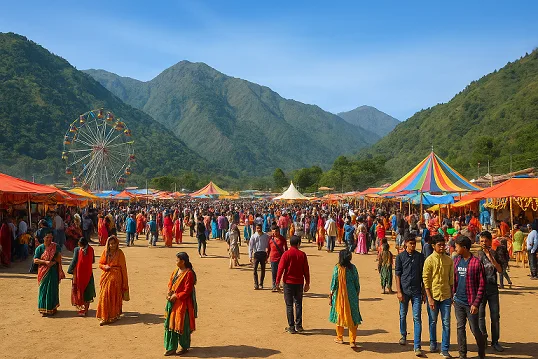By – Mohit Bangari
Lakshman Ganga River – Lifeline of the Hemkund Sahib Trek
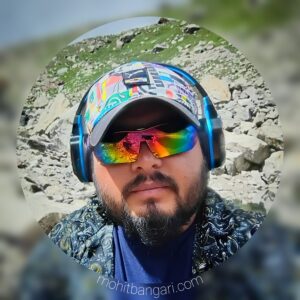
Mohit Bangari
Explore Himalaya With Me!!
Facebook
Email
WhatsApp
Twitter
LinkedIn
Tumblr
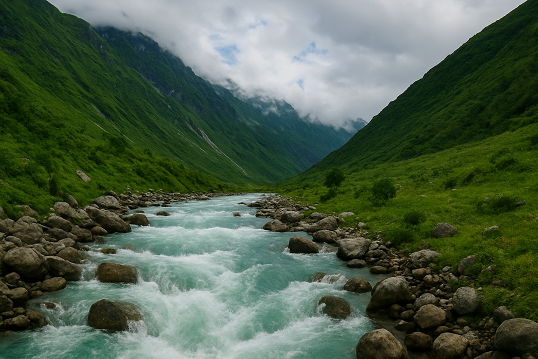
If you are planning to trek to the Hemkund Sahib, one name you will hear again and again is Lakshman Ganga. This river is not just a water stream flowing through the valley; it is the lifeline of the entire trek. From the sound of rushing water that guides trekkers, to the fertile banks that support the lush greenery, Lakshman Ganga is deeply connected to the journey and the local life.
Table of Contents
Origin and Course of Lakshman Ganga
Lakshman Ganga originates from the glaciers near Hemkund Sahib, at an altitude of over 4,000 metres. The river flows down with great force, especially during the summer snowmelt and monsoon rains. From Hemkund Sahib, it rushes towards Ghangaria, the main basecamp for both the Valley of Flowers and Hemkund Sahib treks.
At Ghangaria, Lakshman Ganga merges with Pushpawati River. From there, the combined stream flows down to meet the Alaknanda River at Govindghat. This entire river system nourishes the alpine meadows, forests, and villages along the trekking route.
Importance for the Trek
For trekkers, Lakshman Ganga is more than just a scenic river. It acts like a natural guide – the trekking route from Govindghat to Ghangaria follows its course closely. You will cross wooden and metal bridges over it, walk along its banks, and hear its roar long before you see it.
The river also provides drinking water sources at various points along the trek. Many locals and tea stall owners take water directly from Lakshman Ganga after simple filtration.
Cultural and Local Significance
In Sikh tradition, the river holds a spiritual connection because it flows from the sacred lake of Hemkund Sahib. Locals believe its waters are pure and blessed. For the villagers of Bhyundar and Ghangaria, it is essential for daily life – from washing clothes to irrigation of small patches of land where they grow vegetables and herbs.
Flora and Fauna Around Lakshman Ganga
The riverbanks are home to a variety of Himalayan plants. During the Valley of Flowers season (July to September), the meadows near the river explode with colourful blooms like blue poppies, brahmakamal, and Himalayan primulas. The moist environment near the river attracts many birds like the Himalayan monal and wagtails.
Best Spots to See Lakshman Ganga on the Trek
Bridge near Pulna Village – First major crossing after starting from Govindghat.
En route to Ghangaria – The path runs parallel to the river for long stretches, giving great photography spots.
Ghangaria Bridge – Here, you see the confluence of Lakshman Ganga and Pushpawati.
Trail to Hemkund Sahib – High-altitude sections where you can see its icy, narrow beginnings.
Tips for Travellers
Always carry your own water bottle and refill from safe, clean spots along the river.
Monsoon season makes the river very strong – stay away from the edges.
Early morning light is best for photography along its banks.
How to Reach the River
You don’t have to make a special trip – Lakshman Ganga will be your companion from the very first day of your Valley of Flowers trek. Start from Govindghat and the river will be flowing alongside till Ghangaria, and beyond if you are going to Hemkund Sahib.
Lakshman Ganga is not just a river; it is the heartbeat of the Valley of Flowers trek. Without it, the valley would not have its vibrant flowers, its cool breeze, or its soothing soundtrack for tired trekkers.
Also Read
You can also explore more on Himalayan treks like Darma Valley, Adi Kailash, and others on my website mohitbangari.com, where I share full guides, routes, permit tips and cultural info.
Do you know about Ramman festival of Salud-Dungra village? It’s one of the intangible world cultural heritage of India in UNESCO. You can read a detailed article on this topic here.
Facebook
Email
WhatsApp
Twitter
LinkedIn
Tumblr
Related Post
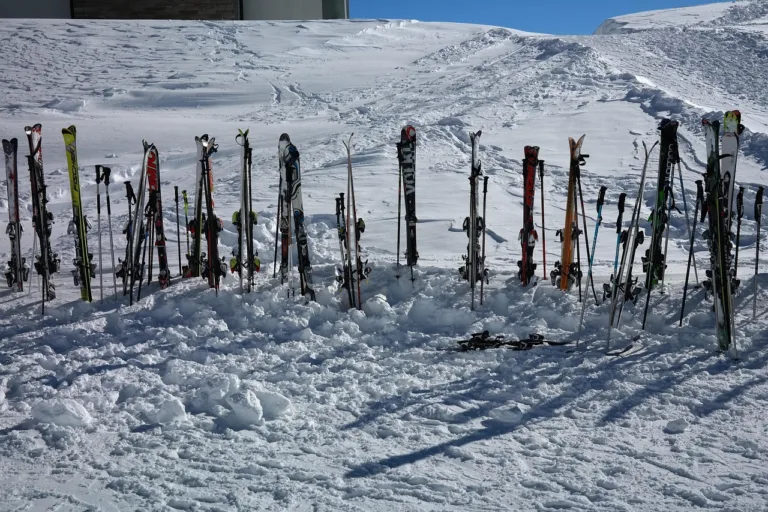
Adventure
Mohit Bangari
30 November 2025

Mohit Bangari
Explore Himalaya With Me!!
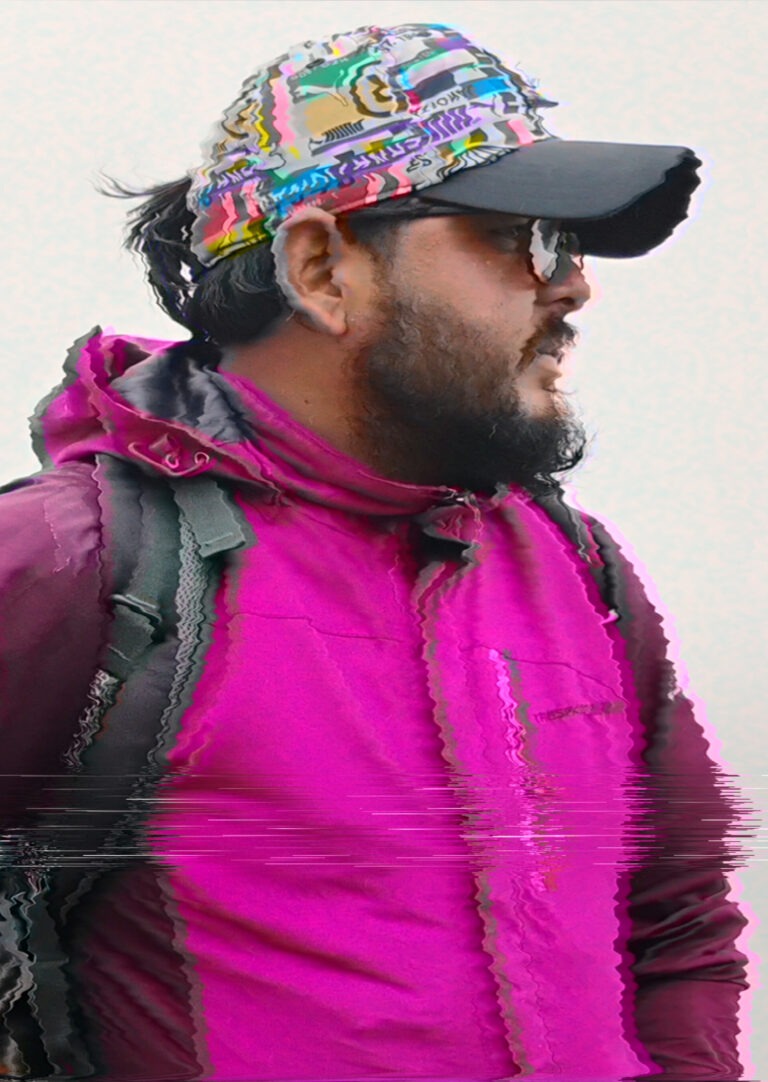

Explore the beauty and cultures of the Himalayas, from Jammu and Kashmir to Arunachal Pradesh, Tibet and Nepal. My blog shares stories, pictures, and fun articles about this amazing region. Come along on a journey where each mountain has a tale and every valley hides a treasure. Join me as I discover the magic of the mountains together.
Welcome to my Himalayan Adventure!

